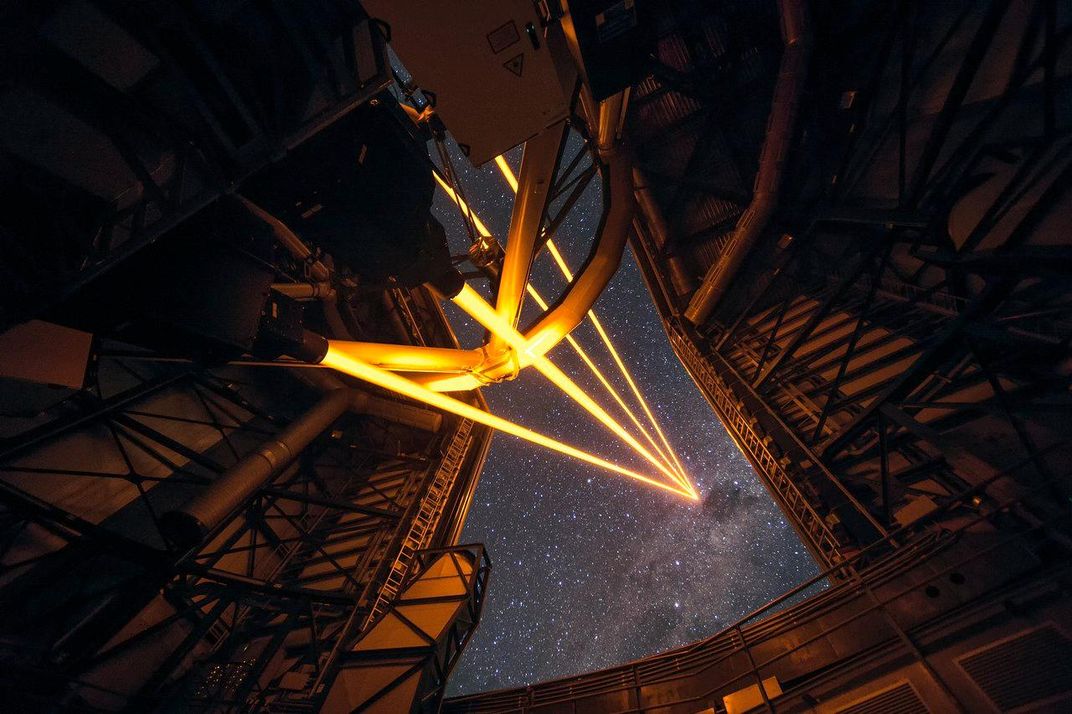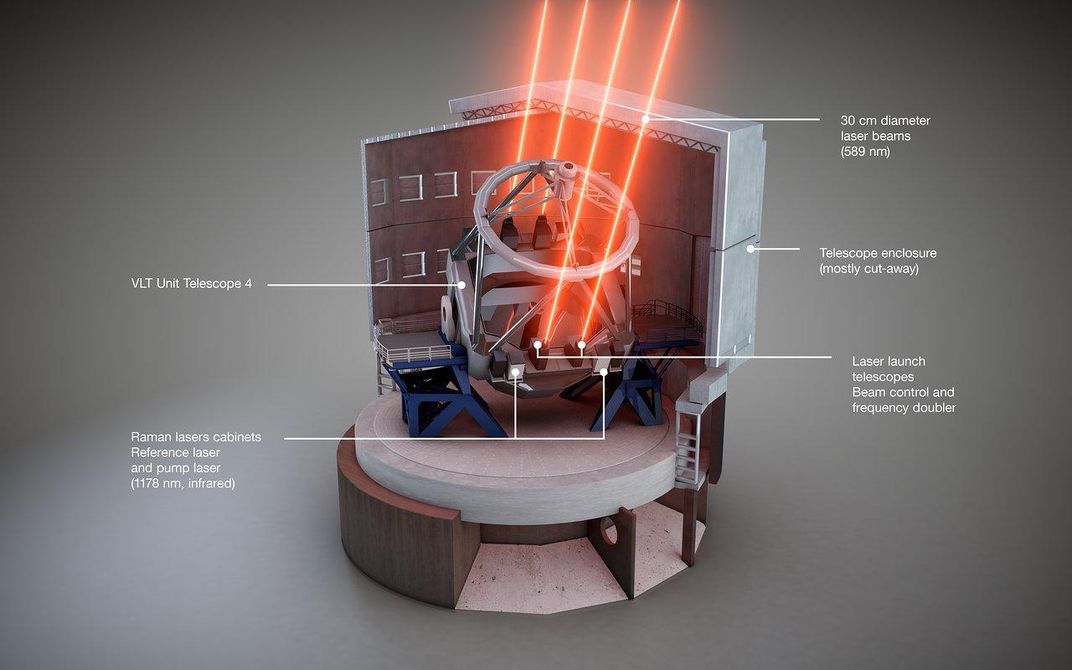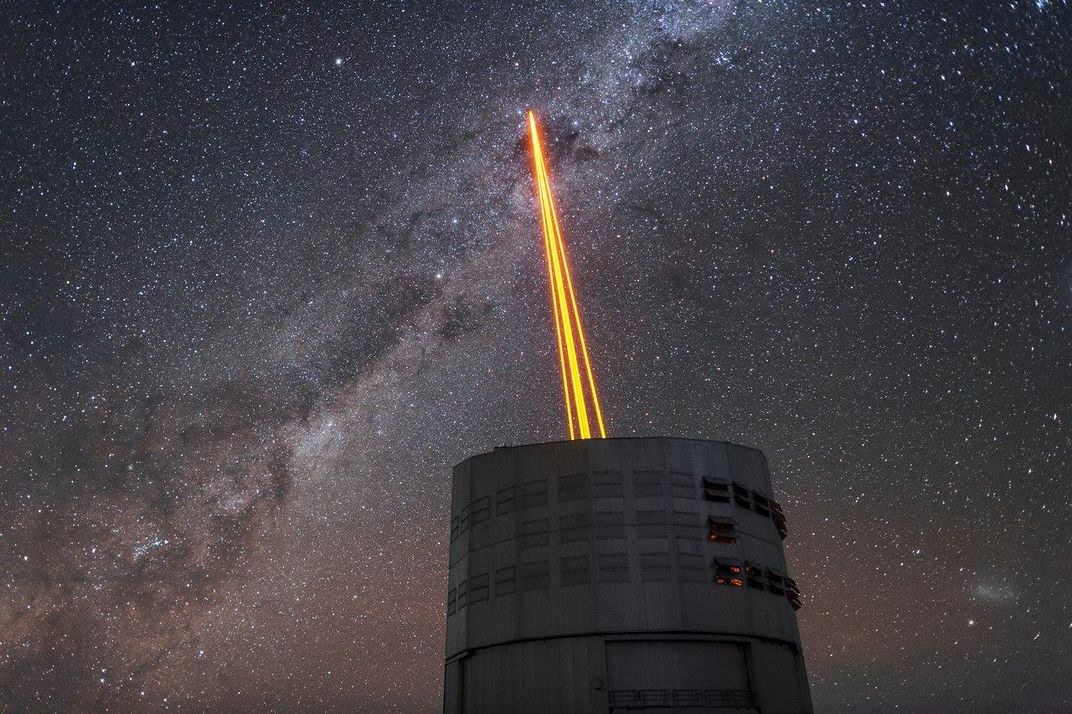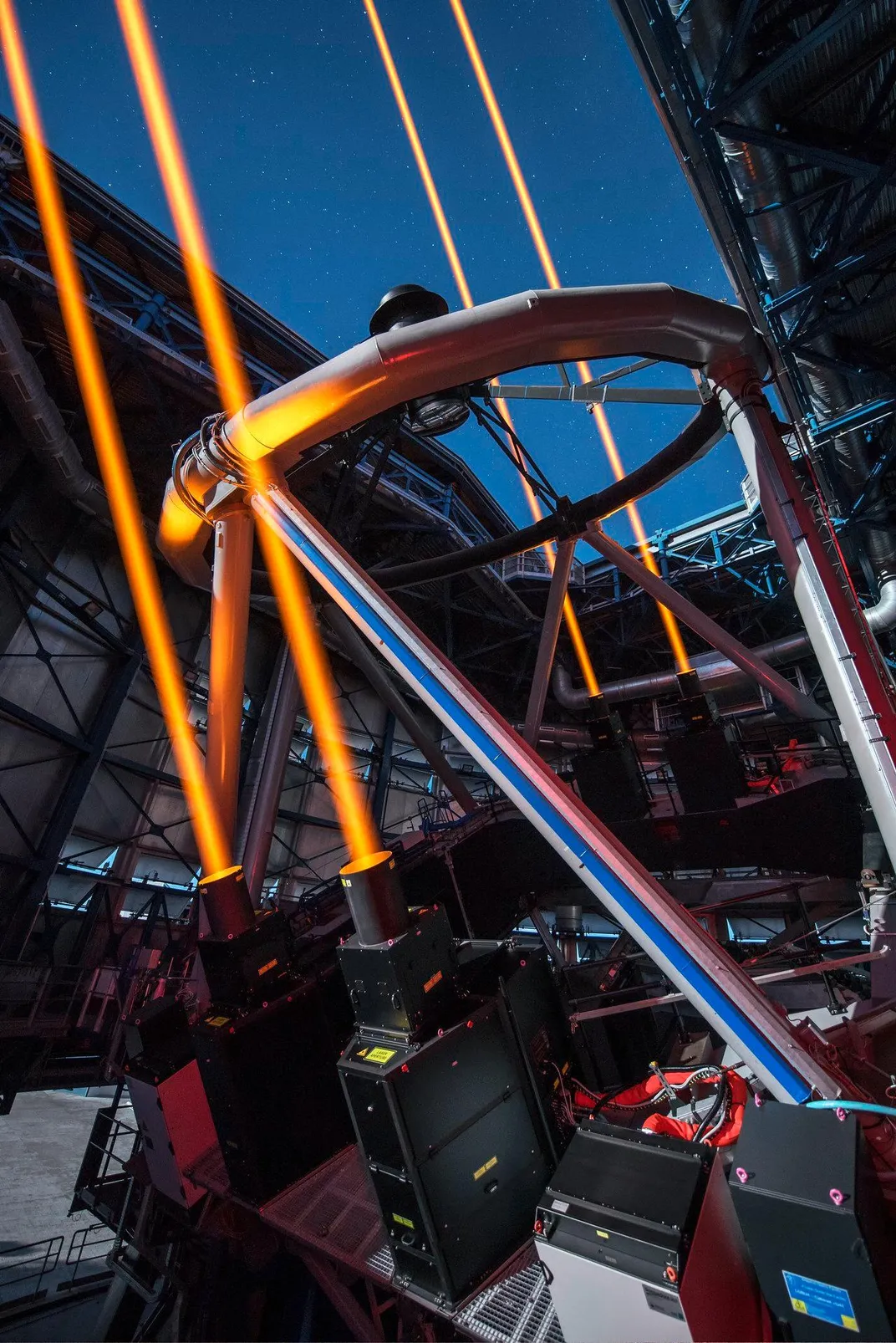Astronomers Deploy a Laser System for a Clearer View of the Skies
A new four-laser system at the Paranal Observatory will help the massive telescope compensate for atmospheric turbulence
Astronomy is not as easy as just building a bigger telescope. Since almost the first time humans turned a lens to the night sky, astronomers have been plagued by turbulence in the Earth’s atmosphere. To help combat that problem, observatories are often built as high as possible in areas with calmer air. But as our telescopes grow increasingly sensitive and peer deeper into space, every miniscule jiggle impacts the image. That’s one reason we send multi-billion dollar telescopes like the Hubble and the future James Webb Space Telescope out of Earth’s atmosphere.
But astrophysicist Ethan Siegel at Forbes reports that in the last decade advances in “adaptive optics” are making ground-based observatories almost as good as their outer space cousins. Earlier this week, the Paranal Observatory in Chile’s Atacama Desert, a partner of the European Southern Observatory, unveiled the latest in adaptive optics when it turned on its Four Laser Guide Star Facility attached to an 8.2 meter diameter VLT (which stands for Very Large Telescope). The massive telescope shoots four 22-watt laser beams into the atmosphere.
Even though the lasers look like a Bond villain plot to blow up the moon, they're aimed at a layer of sodium atoms about 60 miles above the ground. The lasers excite the atoms, causing them to glow and form “artificial stars.” Those bright atoms give astronomers below a visual representation of the turbulence in the atmosphere, which the advanced telescopes can use to compensate their mirrors, creating sharper images.
At Paranal, this technology is taken to a whole new level. “Using more than one laser allows the turbulence in the atmosphere to be mapped in far greater detail to significantly improve the image quality over a larger field of view,” the ESO says in a press release.
It’s not the first time adaptive optics have been tried. Siegel points out that the Gemini Observatory in Chile has used a single laser since 2012, sometimes producing images equal to or better than Hubble. He explains that as a new class of 25 to 39 meter ground-based telescopes will come online over the next decade, like the European Extremely Large Telescope slated for 2024, advances in the laser compensation technology may eventually make them even better and cheaper than space-based telescopes.




